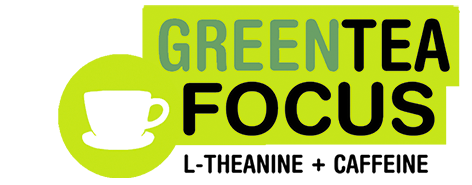History & Evolution of Caffeine
Found in a variety of commonly consumed products, caffeine is the most popular psychopharmaceutical in the world. As you probably know for yourself, caffeine has historically been used for its ability to reduce fatigue and increase mental functioning. Caffeine does this through its effect on a biochemical molecule called adenosine. In the brain, adenosine has an inhibitory role working to reduce activity in the central nervous system. Caffeine in turn inhibits adenosine, and through this inhibition of an inhibitor it effectively stimulates central nervous activity. This brain activity is then experienced in the form of a surge of alertness and mental focus.
Although in Western culture caffeine is traditionally consumed through coffee, caffeine is also found in teas, soft drinks, energy drinks and even in chocolate. The use of caffeine through these mediums extends far into the past. Coffee, for example, is mentioned in as legends from as far back as the ninth century AD. In Ethiopia, coffee’s place of origin, Ethiopians would crush coffee beans and mix them with fat into balls. They would eat these during long journeys in order to keep up theirenergy. Tea is thousands of years old; the people of the Han Dynasty frequently drank it for its medicinal effects, and later on it was consumed for its mental benefits as well. This is even true for Coca Cola — the kola nut, which contains caffeine and was a flavoring ingredient for Coke, is a traditional part of West African culture. It was chewed to ease the pain of hunger and was also used as a sacred offering during weddings, funerals, and other religious ceremonies.
Because society’s consumption of caffeine is so established then, one would expect that it has been refined to an exact science. Surprisingly, however, this is far from the truth. In fact, caffeine consumption is highly variable; the amount of caffeine available is dependent on multiple factors such as the caffeine source, the method of preparation, growing techniques, etc. A normal serving of coffee, for example, will contain more caffeine than a normal serving of tea and in the same vein; darker, longer-roasted coffee usually has a lower caffeine content than lighter coffee roasts. A cup of coffee can range from 40mg-176mg and tea has shown to have on average 27mg of caffeine. This high degree of variability leads to a consumer who has almost no idea as to how much caffeine they are actually consuming.
This impreciseness of our caffeine consumption has begun to be corrected by modern manufacturing, which has isolated caffeine on its own. You see the evolution of caffeine in plants simply did not occur for the benefit of the unfocused man or woman. Caffeine evolved in plants because it acts as an insecticide, preventing insects from feeding on the plants and thereby helping them survive and reproduce. As such, caffeine sources like the coffee bean were simply not designed to benefit the human mind. Although the caffeine we isolate from these plants helps cognitive functioning, this is merely an unintended side effect. Now that we have isolated the caffeine, however, we can look at it independently and find ways to improve its already impressive effects. This is where modern scientists have stepped in and found caffeine’s other half –L-theanine.
L-theanine is an amino acid that was originally found in green tea. On its own, L-theanine has been shown to relieve anxiety by increasing the production of alpha brain waves. More significantly, however, L-theanine has been shown to work with caffeine synergistically to produce remarkable results. Multiple comprehensive studies have now demonstrated that caffeine becomes even more effective when taken in combination with L-theanine. L-theanine not only drastically improves the therapeutic effects of caffeine, but also minimizes the negative effects associated with it, such as jitteriness and anxiety. Interestingly, caffeine is also found in green tea but the ratio of caffeine to L-theanine is unsuitable for significant mental benefit. The manufactured combination of L-theanine and caffeine takes advantage of the pharmacology behind their individual mechanisms of action to yield a final outcome dramatically superior to that of caffeine alone. The use of L-theanine with caffeine is the beginning of a momentous shift in the overall way caffeine is used as a tool by society.

An outstanding share! I’ve just forwarded this onto a colleague who has been conducting a little research on this.
And he actually ordered me lunch due to the fact that I stumbled
upon it for him… lol. So let me reword this…. Thanks for
the meal!! But yeah, thanks for spending time to talk
about this subject here on your blog.
No problem, free food is the best. I’m glad someone found it useful.